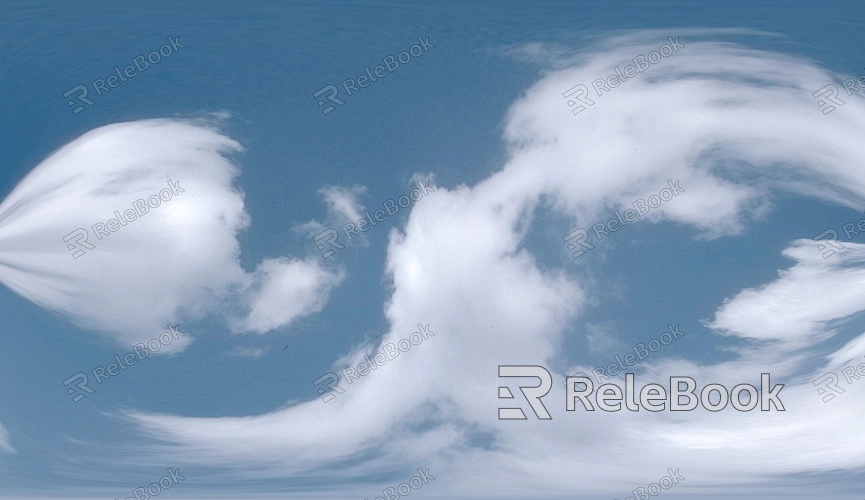What Resolution Should HDR Sky Textures Be for 3D Modeling
When creating realistic scenes, HDR images are often used to simulate accurate lighting and environmental reflections. As an important light source and background, HDR sky textures play a crucial role in 3D modeling. The resolution you choose directly impacts both the rendering quality and performance. Therefore, selecting the right resolution for HDR sky textures becomes a key consideration. In this article, we’ll explore the factors affecting HDR sky texture resolution in 3D modeling software, helping you balance image quality with workflow optimization.

1.How HDR Sky Texture Resolution Affects Rendering Quality
The resolution of HDR textures has a direct impact on the clarity of rendered scenes. High-resolution HDR images provide more detail and precision in lighting and reflection, but they also require more memory and storage space.
Lighting Detail: High-resolution HDR textures capture intricate sky details like clouds and sunlight, which are critical for highly detailed architectural visualizations or cinematic-grade renders.
Reflection Accuracy: Higher resolutions generate more accurate reflections on surfaces, particularly on reflective materials like metals and glass, where every detail counts.
While high-resolution HDR textures are ideal for scenes requiring a high level of realism, using excessively high resolutions in smaller, less detailed scenes may waste resources.
2.3D Modeling Software and Its Ability to Handle HDR Sky Texture Resolution Different 3D modeling software packages have varying capabilities when it comes to processing HDR sky textures. Understanding how your chosen software handles these textures is essential for selecting the right resolution.
Blender: Blender can work with a variety of HDR image resolutions. For complex scenes, 16K or 8K HDR textures are often recommended to ensure high quality. For simpler previews or lower-res renderings, 4K or even 2K resolutions can provide good results.
3ds Max: As a professional-grade tool, 3ds Max excels in high-precision rendering. Using 8K or higher HDR images in 3ds Max can enhance lighting effects, making these resolutions a popular choice for professionals.
Cinema 4D: Known for its proficiency in animation and motion graphics, Cinema 4D performs well with medium resolutions (such as 4K) in fast renderings. However, for high-end projects, 8K or higher HDR textures significantly boost quality.
Each software has different requirements in terms of GPU/CPU and memory, so designers should tailor HDR texture resolution to the specific demands of the project.
3.How Project Type Influences HDR Texture Resolution
The type of project you are working on greatly influences the ideal resolution for HDR sky textures. Understanding these needs is key to making the right decision.
Architectural Visualization: High-resolution skies and lighting are essential. Using 8K or even 16K HDR textures is common, especially for large-scale scenes.
Game Development: Real-time rendering in games requires careful attention to performance. Lower resolutions like 2K or 4K are typically used to ensure smooth rendering. Modern game engines use techniques like light maps and ambient occlusion to create good results with lower-resolution textures.
Animation and Film Production: For film-level rendering, 16K or higher HDR images are necessary to generate highly realistic lighting, especially when working with large sky areas and complex lighting conditions.

4.Impact of HDR Texture Resolution on Hardware
The resolution of HDR textures directly affects hardware performance, including memory usage, storage, and rendering time.
Memory Usage: Higher-resolution HDR images demand more VRAM. Using 8K or 16K HDR images requires at least 8GB of VRAM for stable rendering. Insufficient memory can cause crashes or excessively long render times.
Storage Space: HDR image files are large, especially 16K textures, which can exceed hundreds of megabytes or even a gigabyte. Ensuring ample storage for these files is critical before starting a project.
Rendering Time: High-resolution HDR textures significantly increase rendering time, particularly in complex scenes. To optimize render times, consider using lower resolutions initially or save higher-resolution HDR textures for final renders.
5.How to Choose the Right Resolution
Choosing the resolution for HDR sky textures involves balancing image quality with hardware capabilities.
2K to 4K: Suitable for real-time rendering, quick previews, or smaller scenes.
8K: Ideal for high-precision stills or scenes requiring more detail.
16K: Best for extreme high-detail renders, such as film production or large-scale architectural visualization.
The right resolution depends on your project's scale and hardware limitations. For most design workflows, 4K or 8K HDR textures should suffice for the majority of needs.
6.The Future of HDR Texture Resolution
As hardware performance continues to improve, designers will be able to use higher-resolution HDR textures without worrying about performance bottlenecks. Modern rendering engines are also evolving to support more efficient image compression, helping to reduce memory and storage usage.
By understanding how HDR sky texture resolution affects rendering quality, performance, and project requirements, designers can make more informed choices for different types of projects. Whether you're working on architectural visualization, game development, or film production, selecting the right resolution can enhance rendering results while optimizing your workflow. If you’re in search of high-quality HDR images, 3D textures, or models for SketchUp or 3ds Max, Relebook offers a variety of resources to help you achieve outstanding visual results in your projects.

